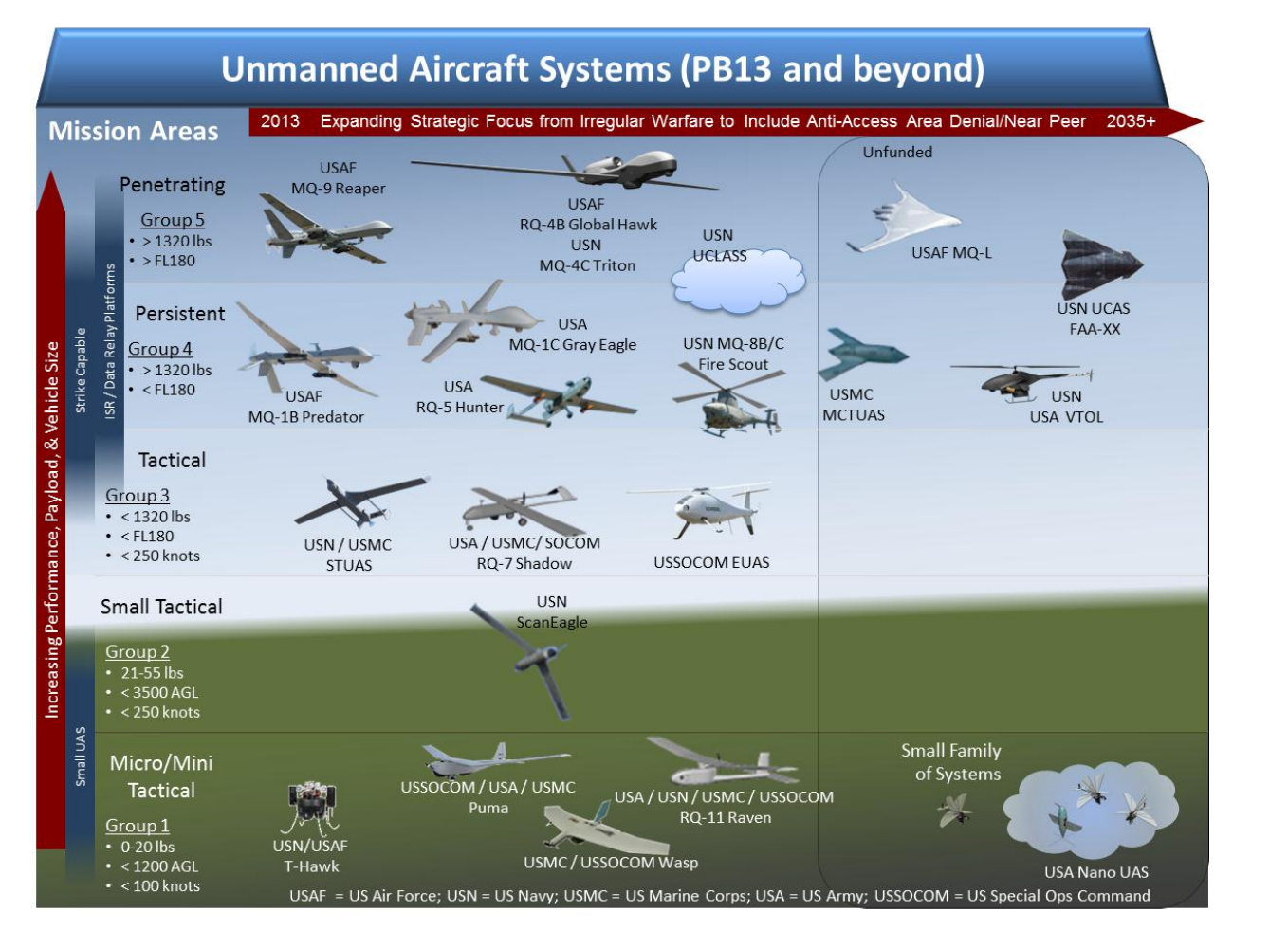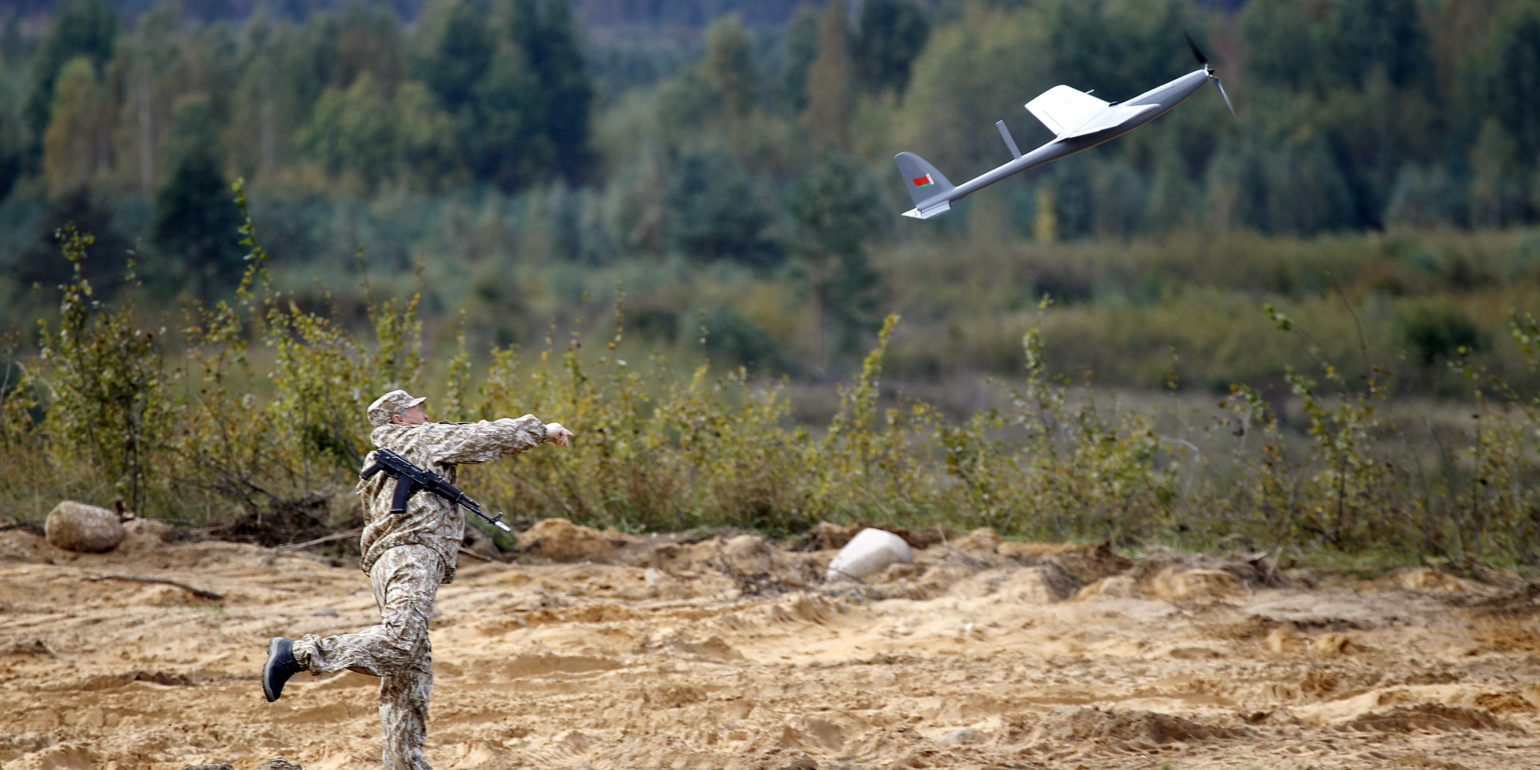The Modern Threat of Unmanned Aircraft Systems (UAS)
Unmanned Aircraft Systems (UAS), commonly known as drones, present a unique and evolving strategic challenge for military planners worldwide. Over the past decade, the proliferation and technological advancement of UAS has accelerated, leading to their widespread use in both military and civilian sectors. In 2023, the global drone market was valued at $30.8 billion, demonstrating these systems’ rapid growth and integration across various industries. UAVs offer inexpensive intelligence, surveillance, and reconnaissance, drones can be as little as $500 or less including the warhead.
UAS are classified based on their size, range, and speed, falling into five groups:
- Groups 1-3: Smaller, short-range UAS, often used by non-state actors due to their low cost and availability. These groups pose significant challenges due to their mobility, low altitude, and potential for ISR (Intelligence, Surveillance, and Reconnaissance) missions.
- Groups 4-5: Larger, long-range UAS, typically employed by state actors. These drones, such as the MQ-1 Predator and MQ-9 Reaper, are more akin to manned aircraft in terms of their operational profile and susceptibility to traditional air defense systems.

The primary threat from Groups 1-3 UAS lies in their ISR capabilities and their potential to carry small payloads for targeted attacks for a small cost. These drones can provide real-time intelligence and coordinate precision strikes, making them a formidable tool in modern combat scenarios. As seen in recent conflicts, the difficulty in detecting and neutralizing these small, low-flying drones poses a significant risk to ground forces. Groups 4-5 provide cost-effective long-range strike or reconnaissance capability.
Proliferation of UAS in conventional warfare:
The conflict in Ukraine has highlighted the strategic significance of UAS in modern warfare. Ukrainian and Russian forces are adapting to UAS use as demonstrated by the restructuring of military brigades to include assault drone companies. In addition, on the unit level, reconnaissance drones have become commonplace. Both Ukrainian and Russian forces have extensively utilized drones for reconnaissance, artillery spotting, and direct attacks; showcasing the versatility and impact of UAS on the battlefield. The threat of UAS on the battlefield has forced IFVs and tanks to sit further behind the front line hindering the mobile nature of modern warfare. The threat of UAS against armored assets also prevents the massing of armored forces needed for operationally significant advances. Ukraine is also leveraging UAS off the battlefield to strike deep into Russian territory. Long-range UAS enable Ukraine to hit airfields, command posts, ammo depots, refineries, and oil depots hundreds of kilometers away.
Proliferation of UAS among Non-state actors:
UAS are cheap and easy to use, enabling widespread use from State and Non-State actors. The current absence of cost-efficient C-UAS creates a security dilemma as State actors struggle to maintain a monopoly of force as demonstrated in the Red Sea. Ansar Allah, commonly known as the Houthis, operates out of Yemen and use drones to great effect. Houthis use a combination of UAS and maritime drones to threaten cargo ships along the Red Sea shipping lanes. Despite a US-led coalition, the Houthis continue to target and occasionally strike cargo vessels. Since November 2023 the Houthis have targeted more than 60 vessels using missiles and drones and as of July 2024, 4 sailors have been killed, 1 vessel seized, and 2 vessels sank. Drones offer an accessible form of ISR and in the case of the Houthis kinetic capabilities as well. This security dilemma is not unique to the Red Sea; non-state actors across the globe are utilizing drones such as cartels in Mexico, the Islamic State in Iraq, and rebels in Myanmar to challenge and upend the monopoly of force.
Unmanned Aircraft Systems are continuing to improve, shaping the battlefield and decision-making around us. C-UAS must catch up and meet emerging threats such as the combination of UAS guided by artificial intelligence.
Conclusion
The modern landscape of UAS presents complex and dynamic challenges for military forces. The rapid proliferation and technological advancement of drones necessitate a comprehensive and forward-thinking approach to C-UAS capabilities. By leveraging a combination of kinetic and non-kinetic solutions, alongside robust detection systems, the United States and its allies can enhance their preparedness and resilience against the growing threat of unmanned aircraft systems. As conflicts like the one in Ukraine have shown, the strategic importance of effective UAS countermeasures cannot be overstated.

